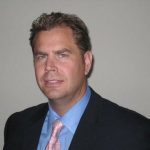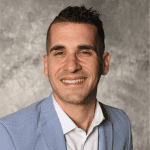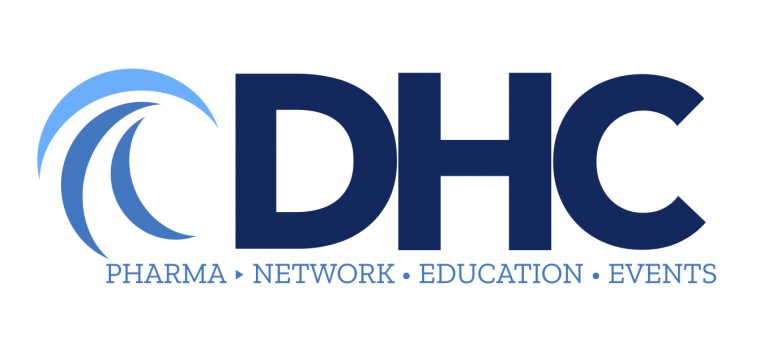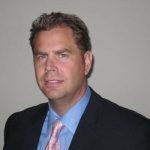Insights with Innovators
The Role of Data and Targeting in HCP Activation - Digital Health Coalition
Roundtable Discussion

Summary
In this Insights with Innovators, Mark Bard talks with Angelo Campano (SVP of Market Engagement at OptimizeRX) about the role of data and targeting in HCP activation. When thinking of innovation in the space of HCP engagement, we often think of modular content, MLR review innovation (to drive modular content), and enhanced segmentation models. Angelo sits at the intersection of workflow (at the point of care), content, and targeting, allowing him to offer a unique set of insights.
Interview

Mark Bard
Co-Founder
DHC Group
“Where does the practice infrastructure (messaging, records, clinical guideline access) overlap with the ability of brands to rethink how they ultimately target HCP within workflow?”

Angelo Joseph Campano
Senior Vice President, Market Engagement @ OptimizeRx
“Connected Health is making healthcare more personalized for patients, marketers, and healthcare professionals (HCPs) alike. Companies are investing heavily in this sector, because they recognize that the power and untapped potential of connected health is virtually limitless. This emerging field encompasses countless connected digital channels — wireless, genomic tests, mobile, electronic health records (EHRs), and telehealth. These mediums point to a theoretical model for health management, where devices, services, and interventions are designed specifically to address the patient’s needs. Health-related data can be shared in such a way that the patient can receive care in the most proactive and efficient manner possible.”

Mark Bard
Co-Founder
DHC Group
“What are some examples of innovation within brands that are driving value in the “last mile” of HCP engagement?”

Angelo Joseph Campano
Senior Vice President, Market Engagement @ OptimizeRx
“Providers are placing the greatest emphasis on a few central patient experience areas, such as access to care, education, and empowerment. Now, more than ever before, connected health allows patients and consumers to connect with their provider in a fast, efficient, and convenient manner. One of the optimal tools used in digital patient care is telehealth. Patients and providers can use telehealth in a variety of ways, with the most common being patient use of direct-to-consumer (DTC) telehealth. A patient speaks to their provider via a web conference or phone call, and from there, the provider conducts an in-depth analysis and usually provides a diagnosis and a specific, personalized treatment plan. The lesser-used interaction is when physicians connect with each other to share consults, expertise, and knowledge during their patients’ care. For example, a provider in a remote location (e.g., a free walk-in clinic) might call a physician in a larger healthcare organization (HCO). The HCO physician may have knowledge, tools, or specific expertise that is not available to the physician at the walk-in clinic, making the telehealth outreach extremely beneficial for patient care.”

Mark Bard
Co-Founder
DHC Group
“How about the intersection of social media platforms – gated such as Doximity and Sermo and ungated such as Twitter and LinkedIn – regarding innovation when it comes to enhanced HCP targeting?”

Angelo Joseph Campano
Senior Vice President, Market Engagement @ OptimizeRx
“The industry has to keep a pulse on the changing social environment and move from being marketers to publishers. In this way, they can transform superficial content into great stories and experiences; shifting from aimless connections to meaningful conversations. So, the greatest innovation is to better use what is already there. Gated platforms have historically offered an opportunity for marketers to truly understand the audience they’re speaking to, because you always knew it was just doctors. Within the current landscape of innovation, companies like Equals 5 – a partner of ours – are starting to replicate that experience in ungated areas. This is a huge advancement because now it opens up the ungated platforms to more meaningful healthcare dialogue.”

Mark Bard
Co-Founder
DHC Group
“Any examples of brands using real-time (or close to real-time) social data to enhance targeting of physicians? Is that within workflow or through the field force?”

Angelo Joseph Campano
Senior Vice President, Market Engagement @ OptimizeRx
“Recently an Oncology brand used proprietary social media data to cross-reference data such as the physicians’ specialty, ASCO conference attendance and travel plans, and even JetBlue seat selection to deliver a message to the TV screen directly in front of relevant doctors encouraging a visit to the drug brand’s booth at the conference. Then, when physicians exited the plane, they used mobile phone tracking and custom digital billboards to show brand messages to those same doctors as they walked by. The result? A 40% increase in that brand’s booth attendance year over year.”

Mark Bard
Co-Founder
DHC Group
“What are the critical steps for brands seeking to inject social as a data source in their HCP engagement strategy?”

Angelo Joseph Campano
Senior Vice President, Market Engagement @ OptimizeRx
“We are living in a great time in the history of marketing. We have never been privy to these levels of unprecedented access to rich arrays of audience-level datasets that allow marketers to understand their customers’ needs, preferences, intents, and satisfaction levels. By applying appropriate analytical skills to data, marketers can begin to understand their customers, predict their behaviors, and deliver finely customized communications that generate the desired responses. We are in the era of advanced empirical marketing, the place where what customers do, and not what they say, powers marketing. Omnichannel marketing, the continuous adaptation of the right mix of channel, content, and context to individual customers, has been a key driver (and benefactor) of customer-level analytics.”

